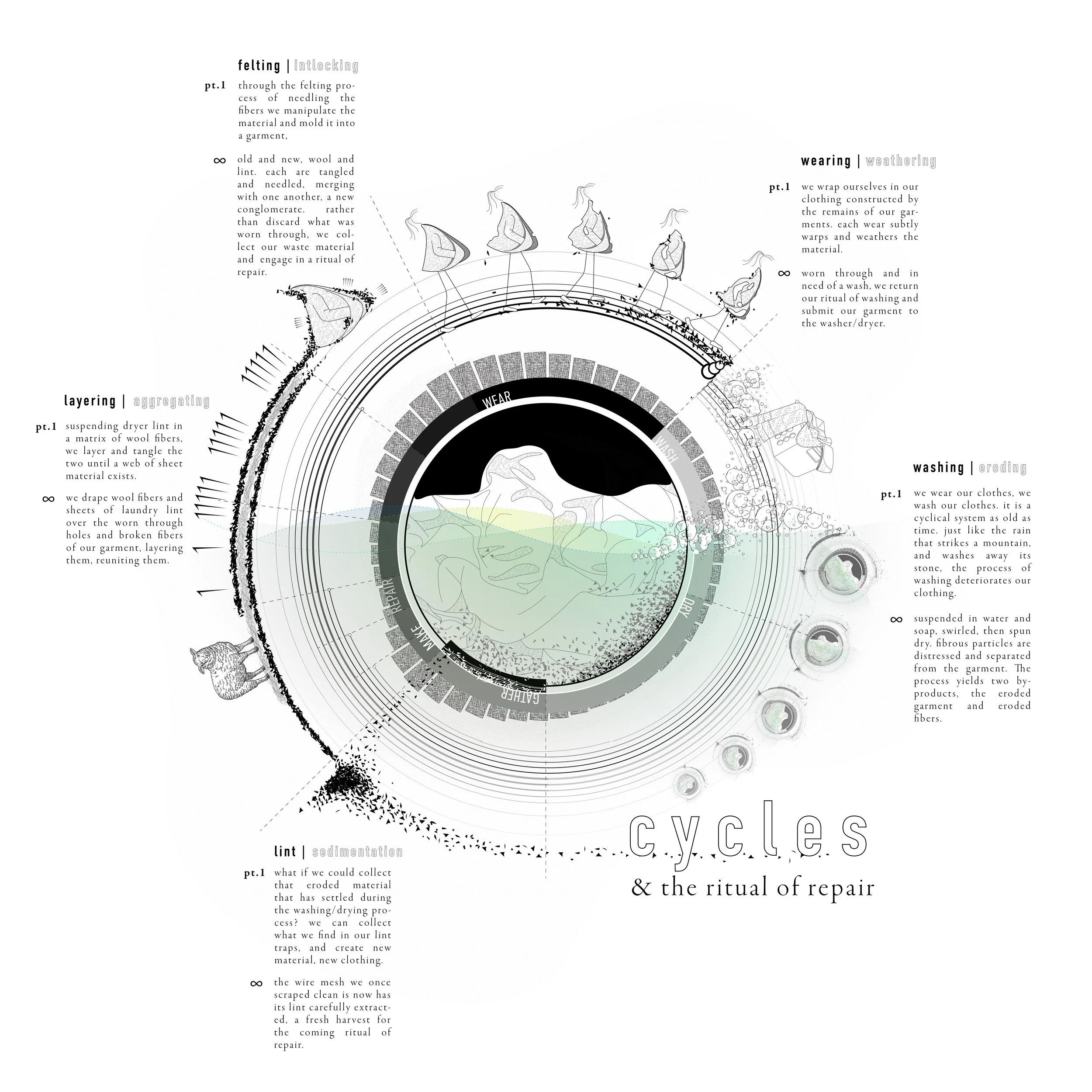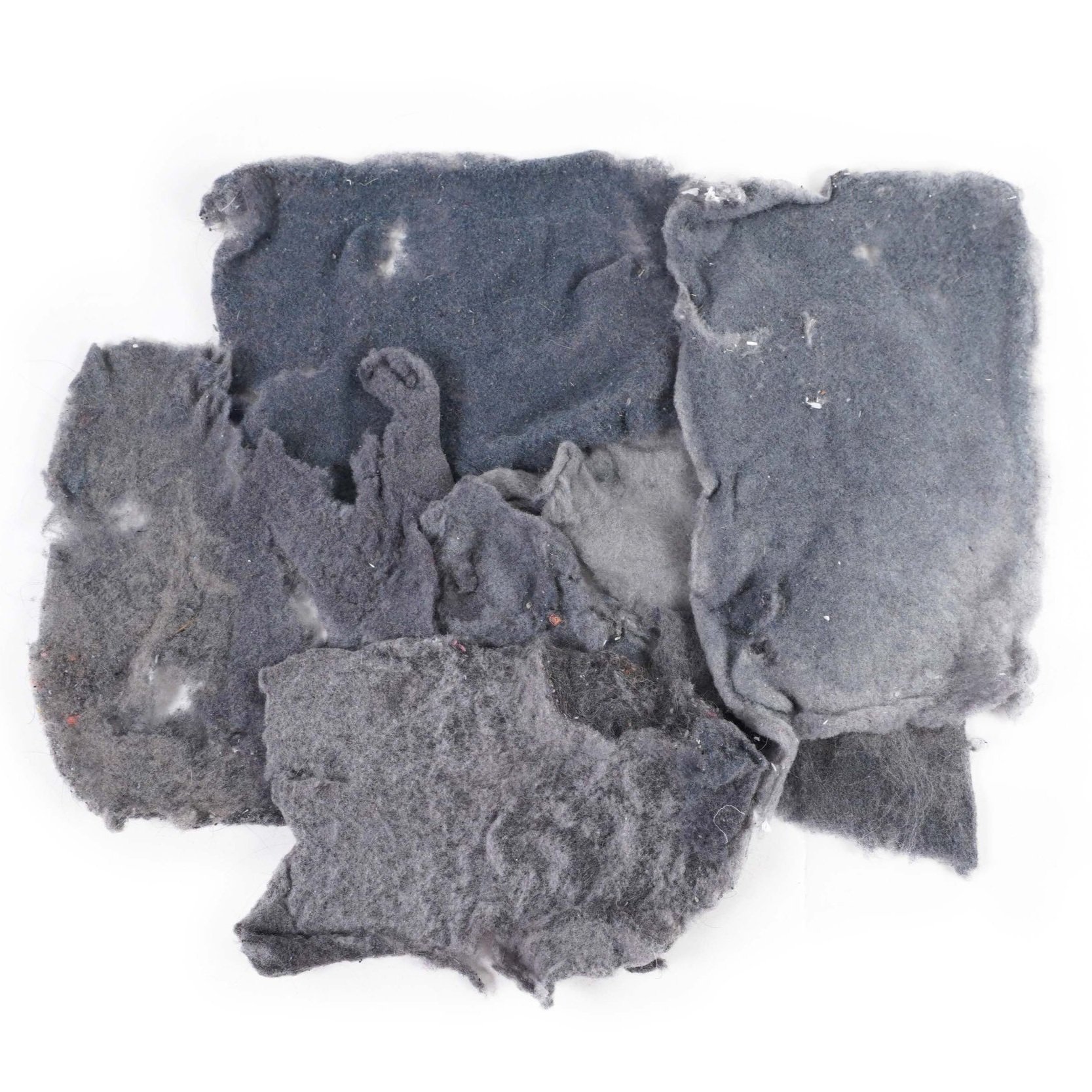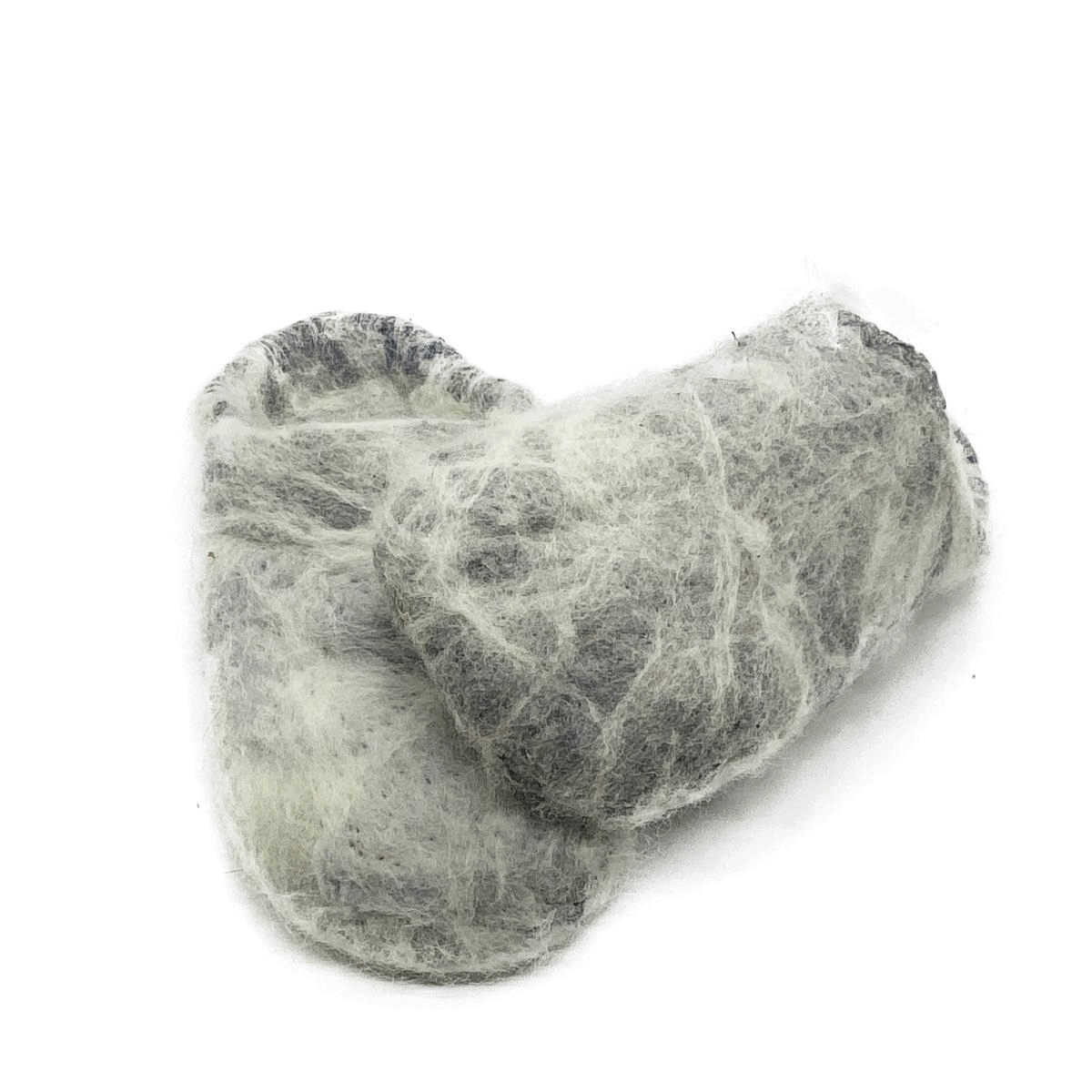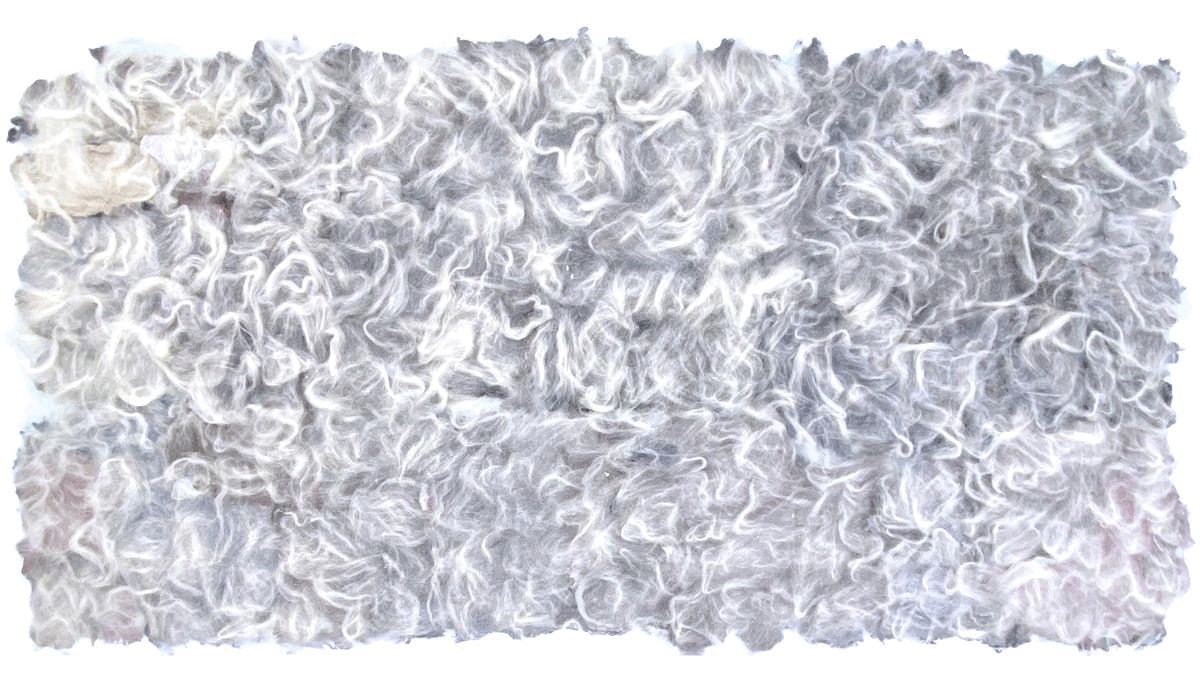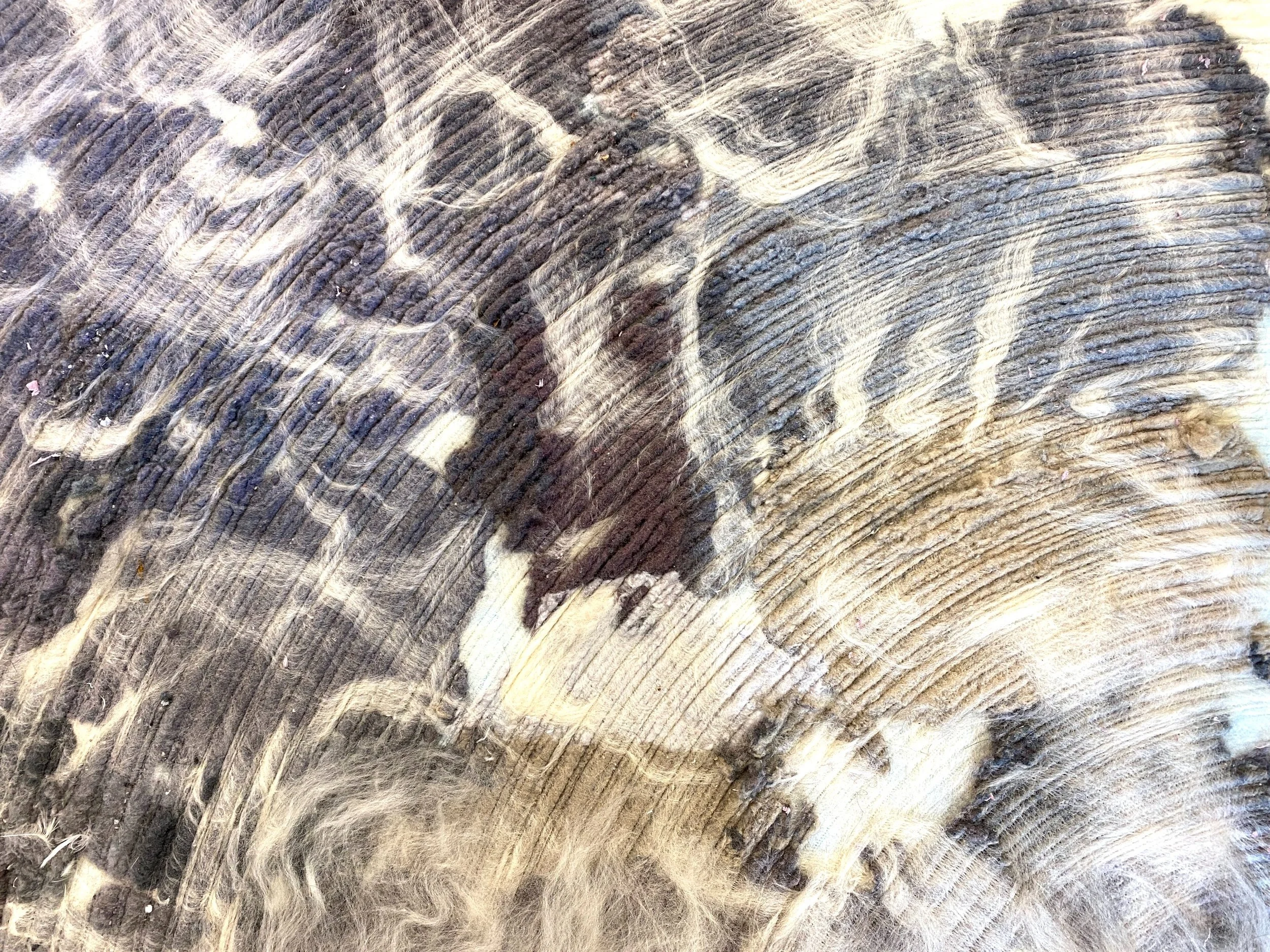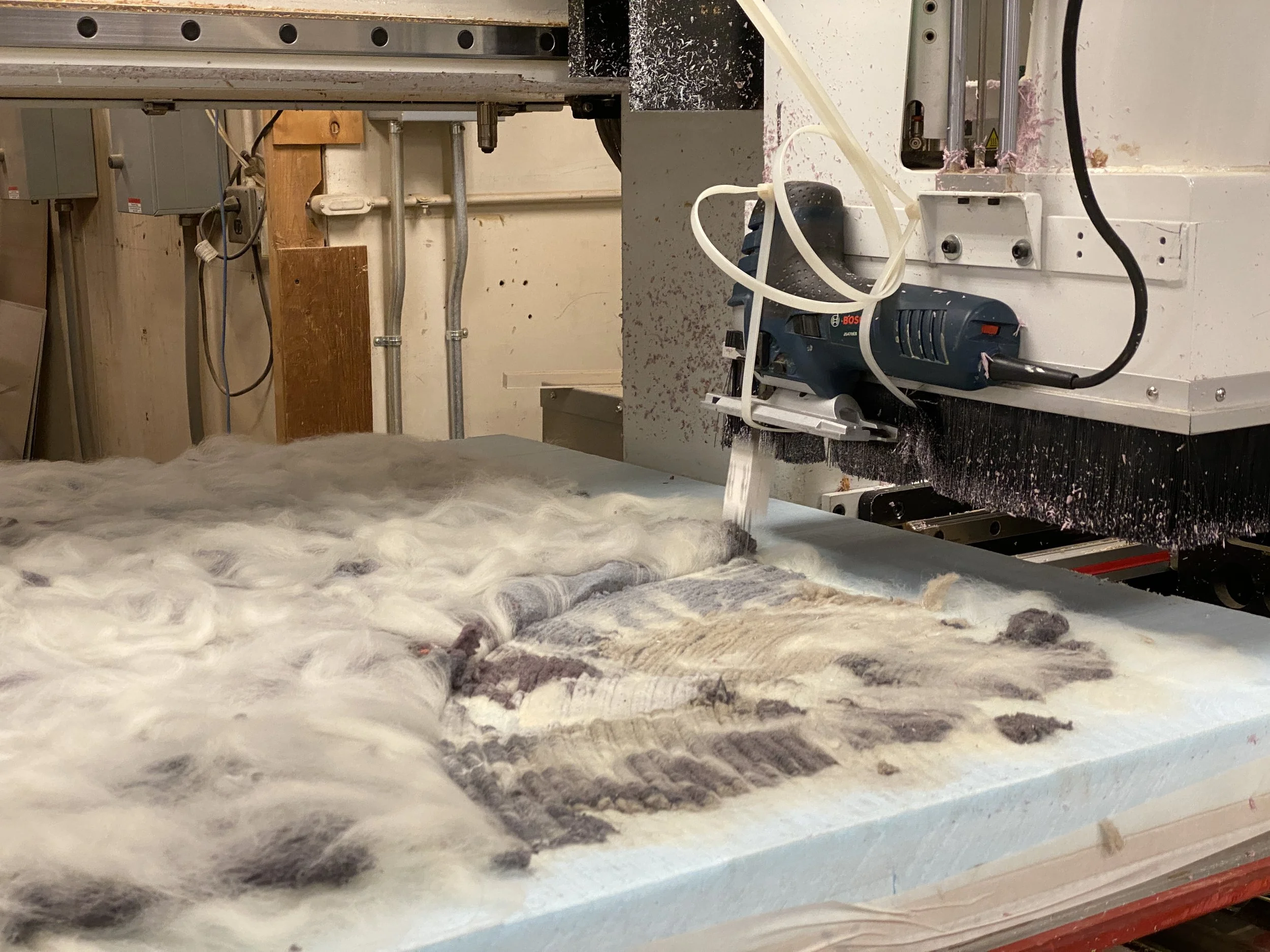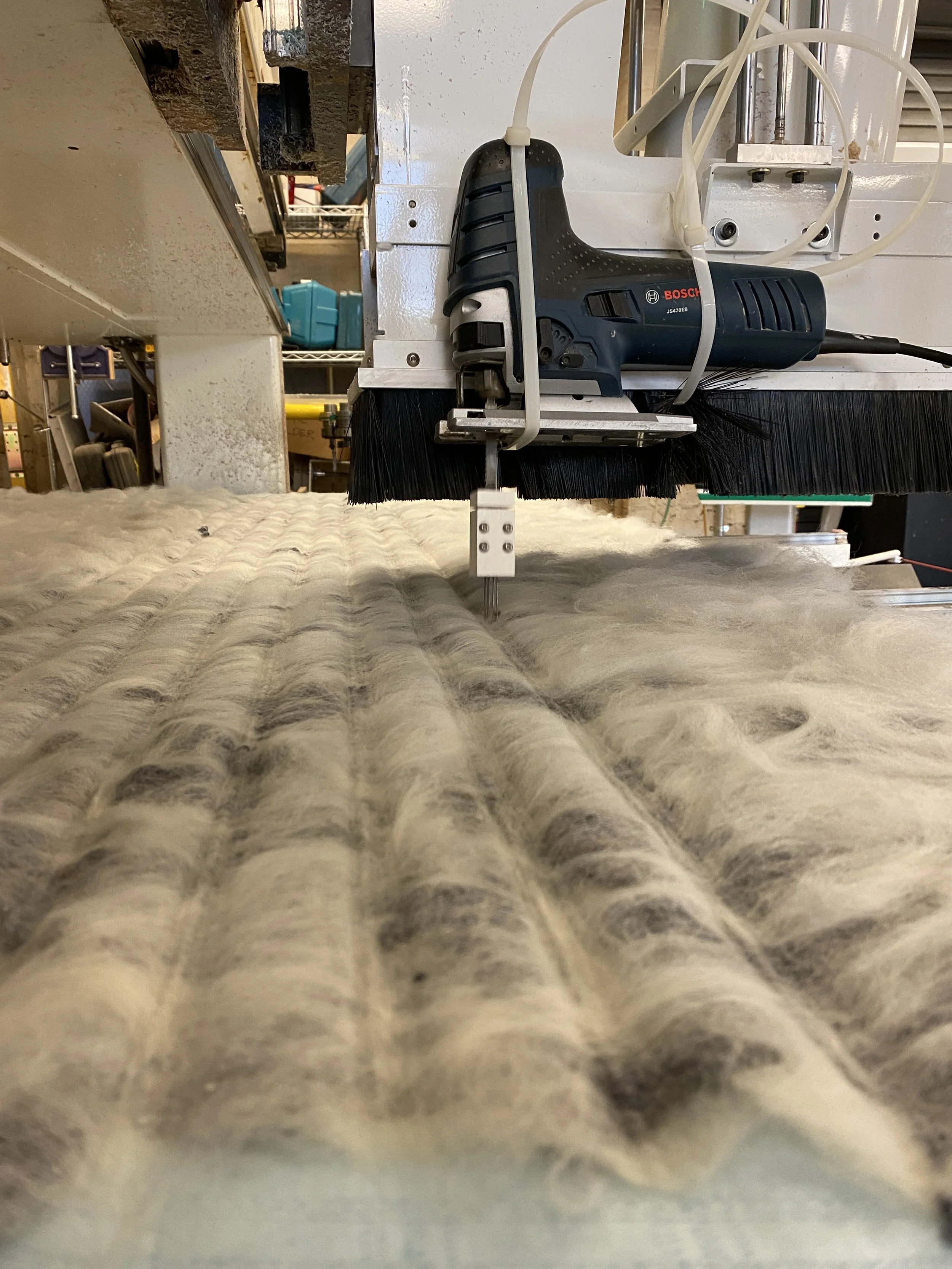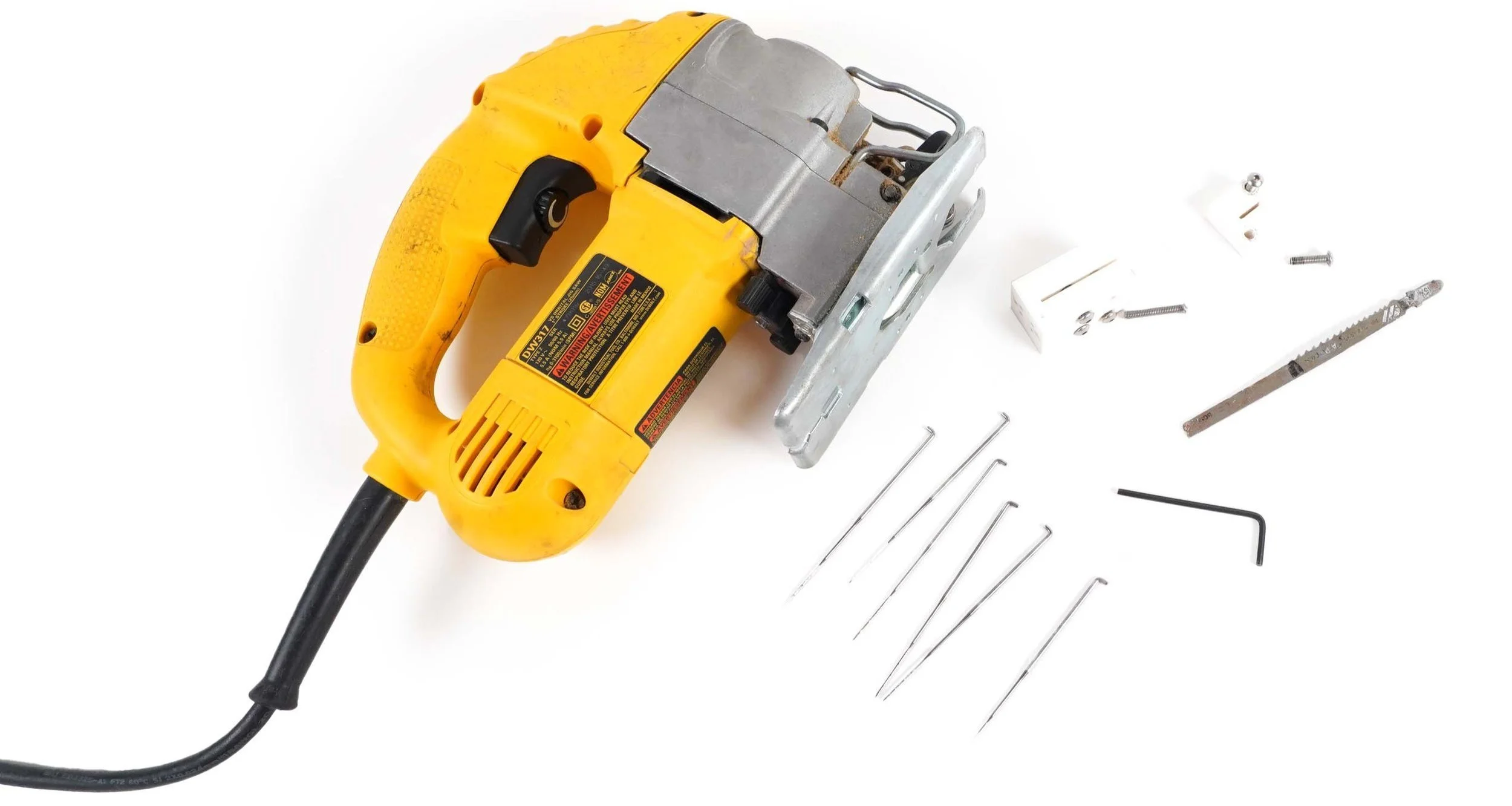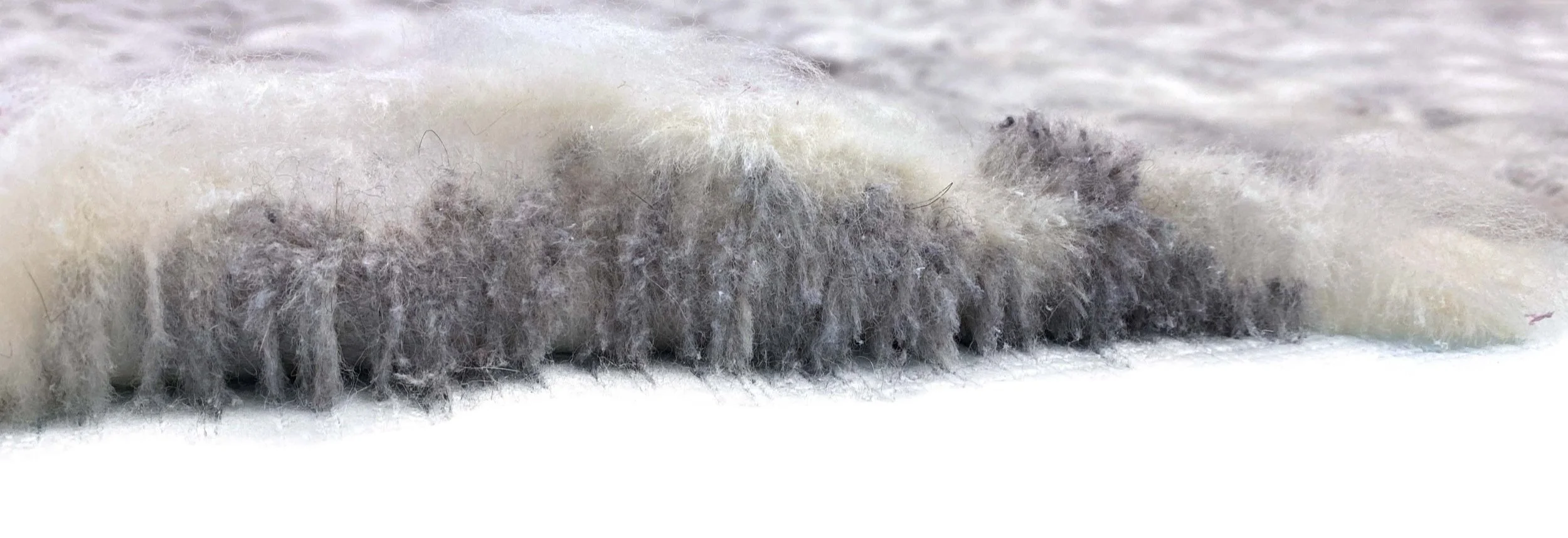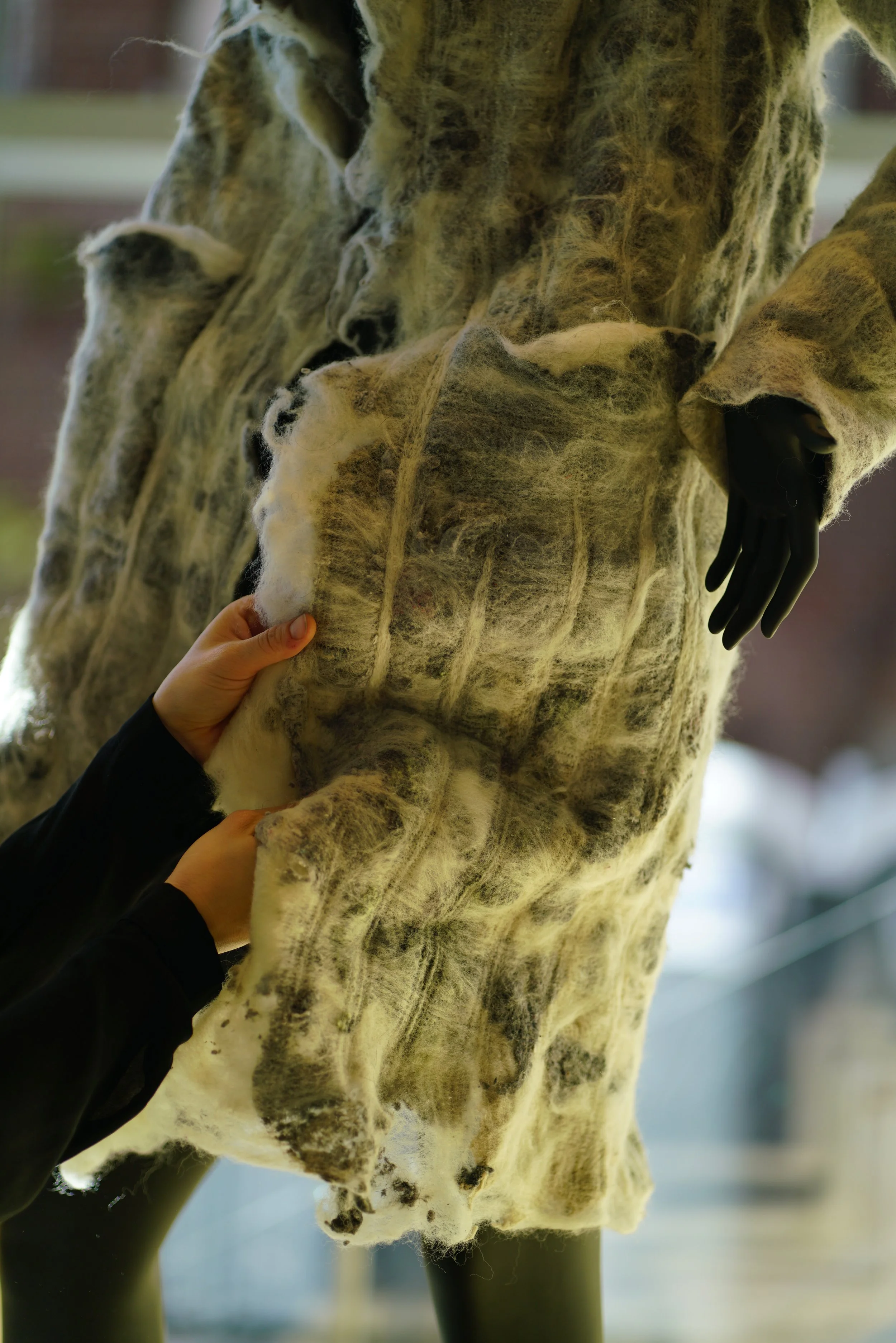
Cycles and the Ritual of Repair
xxx

Prompted to construct intelligent skin or garment, this work looks to cycles + rituals associated with what we wear that are reminiscent of geologic processes, specifically physical and chemical weathering. Rather than focusing on the subtractive and how what is washed away and reveals raw materiality or form, this project gives purpose to what remains post erosion. This project harnesses that which is washed away as a means of resetting the weathering process. The ritual act of wearing and washing our clothing is rough on our clothing. Our dryer’s lint traps expose the eroded particles and fibers of our clothing. These are the remains used to reconstruct material through needle felting.
MIT Option studio | Intelligent Skin
Felting Fabric and Form with Laundry Lint
Taught by Skylar Tibbits and Ganit Goldstein
Fall 2021
Lint was needle felted into a set of slippers. The set were sculpted, worn, and washed. Each iteration of this ritual degraded and eroded the set. The eroded elements were harvested and re-felted, repairing and transforming the slippers. One can see the evolution in the image library from newly repaired to heavily worn and slip on to high ankle boot. On the right, one can see a larger scale seamless garment, felted with jigsaw and Onsrud. Pairing traditional craft with contemporary technology, a self-adhering architectural material is conceived. One can see the process of making revealed in the surface patterning.
Born out of overconsumption and exploitation of resources, as well as geologic weathering, this work challenges traditional perceptions of beauty. Humanity has been intervening in these feedback loops without considering the consequences. This work makes use of these byproducts, embracing the systems and cycles of materiality. Embracing extreme waste and creating a material culture based on radical upcycling, laundry lint, as waste by-product of clothing erosion, is seen as the materials beginning rather than its end. Abundant and free, lint transcends its origins.
Felting with fibers as small as those in lint makes demonstrates the ability of felting to be translated across scales. The aggregation and tangling transitions from soft to hard, thin to thick, and porous to solid. Felted material becomes self-supporting implying architectural potentials. Novel materiality and fabrication paired with waste material creates a tension between disgust and awe.
Photo by Daisy Zhang
Photo by Daisy Zhang
Photo by Daisy Zhang
